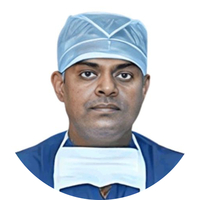What are muscle spasms?
Muscle spasms or muscle cramps occur when a muscle forcibly contracts, becomes stiff and fails to relax. This makes it difficult for the individual to walk or move that particular part. Any muscle can be affected with spasms, but the most commonly affected are the calves, hamstrings and muscles of the feet and abdomen.
What are its main associated signs and symptoms?
Muscle spasms can occur anywhere, in any age and gender and at any time. The various symptoms observed are muscle tightness, inability to move the joints, limited range of movement, unusual posture, stiffness in the joints and, rarely, poor functioning of the affected joints. On examination, an exaggerated reflex response is elicited and the muscle will be painful to touch.
What are the main causes?
There are certain trigger factors involved with muscle spasms. These include the overuse of the muscle, doing a lot of weight training, not doing regular stretches, dehydration and before menses in some females.
Muscle spasms also occur due to certain underlying medical conditions, such as an electrolyte imbalance, inadequate blood supply to the muscle, nerve compression, pregnancy, spastic paralysis, stroke and, rarely, Krabbe disease (a disease wherein damage to the nervous system occurs).
How is it diagnosed and treated?
Diagnosis is based on a detailed medical history for the presence of any triggering factors. The history itself makes the picture clear and there is generally no need to run any blood tests.
Gentle stretches, massage and application of a heating pad can usually help relax the muscle. Treatment is needed if the spasms are severe or prolonged or if there is an increasing discomfort or immobility due to the spasms. Based on the severity and nature of the symptoms, your doctor may advise you certain muscle relaxants, nerve blockers, sedatives and anti-inflammatory drugs. These are usually given only for a period of 5 days. Steroids are not commonly used. The side effects of some of these medications include drowsiness, nausea and confusion. Surgery is recommended when medications do not help, and involves tendon release in the affected area.
Self-care includes regular stretching exercises done under supervision, not wearing too tight clothes, good hydration and enough sleep.
It is very important to treat muscle spasms, as it could otherwise lead to joint stiffness, immobility and muscle wasting.

 Doctors for Muscle Spasms
Doctors for Muscle Spasms  OTC Medicines for Muscle Spasms
OTC Medicines for Muscle Spasms
 Muscle Spasms articles
Muscle Spasms articles

 First Aid for Muscle Spasms
First Aid for Muscle Spasms
 Home Remedies for Muscle Spasms
Home Remedies for Muscle Spasms







 Editorial Team
Editorial Team












